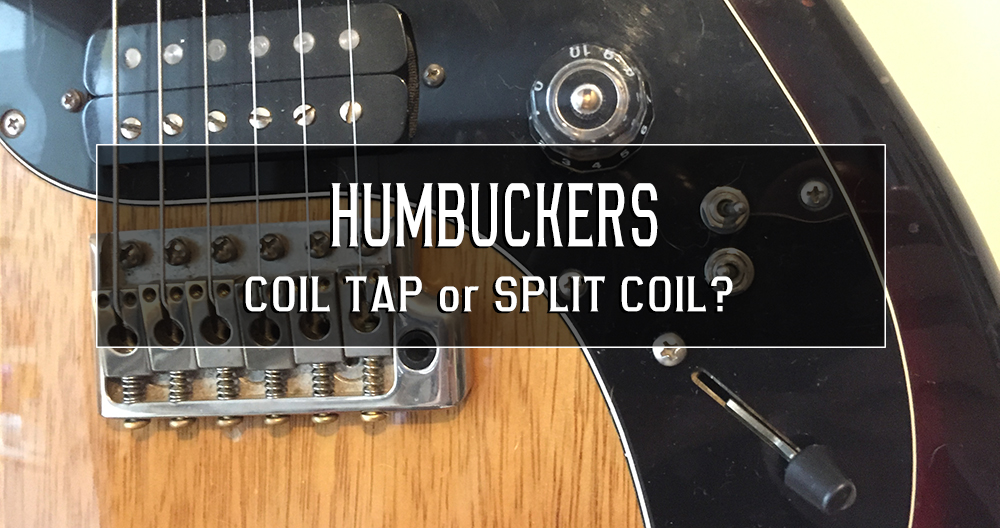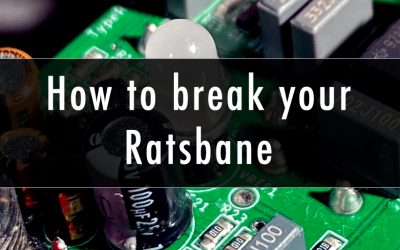
Way back when… and I mean way back when, I was working in a guitar shop and it was right about the time that the concept of the Superstrat REALLY took off. It was the early 90’s and affordable guitars that allegedly bridged the gap between a Strat and a Les Paul were just about everywhere.
Every month I opened up Guitarist magazine be treated to the latest advert from companies like Washburn, Jackson, Ibanez, Charvel and countless others stating that the perfect gigging guitar was available to you. People wanted the power and the balls of a Les Paul (remember, this was before high gain amps were readily available, so you had to push a tube amp to get it to clip in that perfect way) and they also wanted the option to get that bitey, cutting through tone of a Strat/Tele.
Every advert contained the words of either “Coil Tap” or “Split Coil” Humbuckers to give you the best of both worlds. The trouble is, none of them were ever convincing, they always did the HB sounds well, but the SC tones were always kinda meh.
One of the things that became evident to me is that those two features became a solid marketing point for guitars, and guitarists appeared to buy into it without ever really knowing what makes a Humbucker sound the way it does, or why a single coil sounds the way it does, and why it’s virtually impossible for any player to get the sound of both convincingly from their guitars. In fact, there are SO many issues involved in this that I think I can safely say it’s not virtually impossible, it is impossible.
Let’s look at what makes these things react the way they do.
Humbucker pickups.
This is not a one size fits all description and all the names associated with them are used interchangeably. I won’t go into that, but instead we shall concentrate on the pickup developed by Seth Lover, for Gibson, called the PAF. PAF means “patent applied for” and now appears to be one of the generic names for a HB pickup, the irony of that is delicious! Now, a PAF style pickup has two magnets (sitting with opposite polarity) that are wound individually. As the coils were of opposite polarity it cancelled out the hum, it bucked it completely, therefor giving the name we enjoy today. The generic Humbucker.
Split Coil.
This is probably the most common of all the switching types, using a four wire system from the pickup, the switch completely turns off one of the coils therefor giving you a ‘single coil’. This, in theory, appears to be a ‘pick yourself up and dust yourself down Son, job done” moment but as we all know, the first thing that happens is that you get a drastic drop in level (as well as the return of the hum) and it always sounds kinda disappointing.
Coil Tap.
This does not just apply to HB style pickups, it can apply to single coil as well. Basically, what this does is offer an alternate ‘out’ point from the winding, cutting out some of the coil therefor reducing the power coming out of the pickup – because the more winds a pickup has, the higher the output it has. This, in practice, and rather obviously, only serves to reduce the output of the pickup and doesn’t offer any effective change tonally.
The best way to distinguish these two is like this.
Coil Split – Removing ‘one half’ of a double pickup.
Coil Tap – Reducing the output of a pickup.
The real issue when thinking about these, for me, is that I was completely hooked by the concept of “Yay, I can have a strat and a Les Paul, all I have to do is flick a switch” and all I was left with each time was a feeling of disappointment. Even today, my main gig guitar is a PRS Brent Mason signature that has the ability to tap each HB independently. It’s the closest I’ve ever come to a really convincing SC sound out of a HB sized pickup, amazingly, there is no level drop between the two either, the SC is just a ‘loud’ as the HB. I don’t know how they did this, but I like it. However, when I pick up a Strat or a tele that little bit of spank you get from a great SC guitar is just that little bit more prominent, that extra little something that is worth it’s weight in gold.
The most important thing to remember is that tele and Strat pickups are NOT the same. A tele pickup is generally bigger, allow for more winds around a wider coil that a Strat. This increases the output and because the pickup is general mounted on a plate (often brass), giving the whole thing more output, or as I like to call it, balls. This will come from all of the above also gives it a little more high and a little more low end (partly because the pick up is at a slightly more severe angle), so when running into a decent tube amp, it’ll clip quicker giving it the reputation of being a more powerful system. So, any guitar advert that tries to tell you it can do humbucker, and sound like a Strat and a tele is really making an outrageous statement that it probably can’t live up to. Because not only are the pickups are constructed differently enough to cause tonal differences, you then have to take into consider that the neck pickup on a tele is completely different again from the bridge which is then completely different from a neck pickup on a Strat… then you go into the wood within the guitars, the amount of wood, the bridge style and you get more and more distinctions.
Can a guitar ever truly sound like a Les Paul, a Strat and a Telecaster just by flicking a switch?



I’ve been a tone chasing tone snob since I was 14, before the phrase was ever muttered, and up until right now, I didn’t have a full comprehension of the difference between coil tap and split coil.
I’d love to see Jason go in on Series/Parallel next, and the combining of them and the different sounds possible that way
It’s understandable why your traditional strat and tele sounds, and imo particularly p90 sound, are preferable over the tones of split humbuckers the majority of the time. What i don’t understand, however, is why you need it to be literally the strat sound in very nearly that specific single coil character. Are you so certain that the… let’s say half, mostly, or fully split humbucker sound… isn’t good enough JUST because it isn’t the same as a strat? Granted i haven’t exactly been gigging and recording but if we just have more realistic expectations and say yeah at least it doubles secondarily with a single coil sound too? Hey at least you have that, only something added and nothing lost. I’m just saying don’t be a purist for the wrong reasons.
Good article. It’s too bad that manufacturers confuse the market to make sales.
A couple comments though: the statement “Now, a PAF style pickup has two magnets (sitting with opposite polarity) that are wound individually.” is not correct. A PAF style pickup has one magnet that sits below the coils. The north side of the magnet sits under the slug (north) coil and the south side of the magnet sits under the screw (south) coil. The coils are wound individually.
“Coil Tap.
This does not just apply to HB style pickups, it can apply to single coil as well. “ Coil tap does not apply to HB style pickups. It only applies to single coil pickups.
Good article. It’s too bad that manufacturers confuse the market to make sales. Thanks for trying to clear up the split/tap issue.
A couple comments though: the statement “Now, a PAF style pickup has two magnets (sitting with opposite polarity) that are wound individually.” is not correct. A PAF style pickup has one magnet that sits below the coils. The north side of the magnet sits under the slug (north) coil and the south side of the magnet sits under the screw (south) coil. The coils are wound individually.
“Coil Tap.
This does not just apply to HB style pickups, it can apply to single coil as well. “ Coil tap does not apply to HB style pickups. It only applies to single coil pickups.